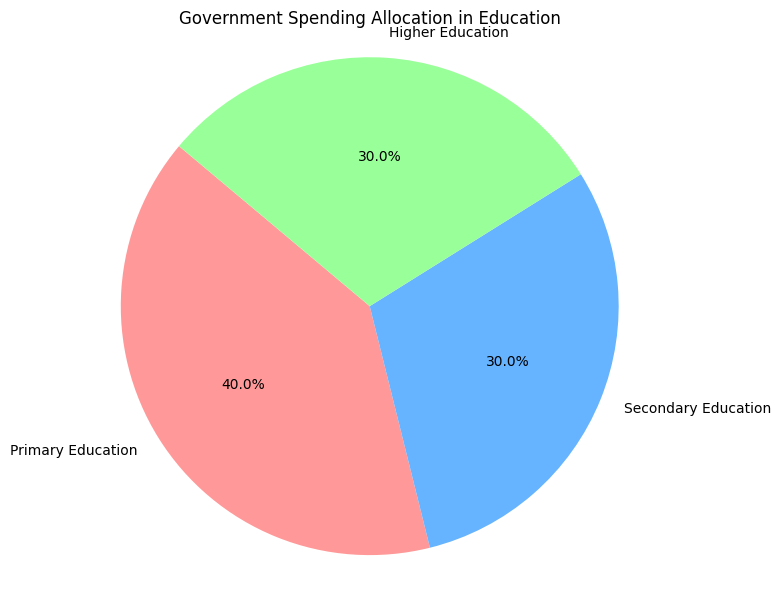Government Spending Allocation in Education
Government spending on education is a critical aspect of ensuring access to quality learning opportunities for all citizens. In Bangladesh, as in many countries, understanding how financial resources are distributed across various educational sectors—such as primary, secondary, and higher education—provides valuable insights into national educational priorities and challenges.

Overview of Spending Allocation
Government budgets earmarked for education are often divided into different sectors to address the diverse needs of learners at various stages of their educational journey. Let’s explore how spending is allocated across these sectors:
Primary Education:
- Primary education constitutes a significant portion of government spending on education. This sector focuses on laying the foundational skills and knowledge necessary for children to succeed academically and socially.
Secondary Education:
- Secondary education receives substantial funding as well, aiming to build upon the foundational skills acquired in primary school and prepare students for higher levels of education or entry into the workforce.
Higher Education:
- Funding for higher education supports universities, colleges, and vocational institutions. It aims to provide advanced learning opportunities, research facilities, and specialized training essential for fostering innovation and driving economic growth.
Pie Chart Illustration
To visually represent the allocation of government spending on education in Bangladesh, we created a pie chart based on hypothetical data:
- Primary Education: 40%
- Secondary Education: 30%
- Higher Education: 30%
Insights and Implications
The pie chart highlights that primary education receives the largest share of government spending, reflecting the importance placed on early childhood development and basic education. Meanwhile, secondary and higher education sectors also receive significant funding, emphasizing the government’s commitment to supporting educational advancement at all levels.
Challenges and Considerations
While the allocation of resources is essential for advancing educational goals, challenges such as ensuring equitable distribution, improving infrastructure, enhancing teacher quality, and addressing socio-economic disparities remain critical considerations for policymakers.
Conclusion
Government spending allocation in education is a pivotal indicator of a nation’s commitment to fostering a knowledgeable and skilled workforce. By understanding how financial resources are distributed across primary, secondary, and higher education sectors, stakeholders can advocate for policies that promote inclusive and sustainable educational development in Bangladesh.
As we continue to navigate challenges and opportunities in education, informed discussions and strategic investments are essential to ensure that every individual has access to quality education, paving the way for a brighter future for generations to come.